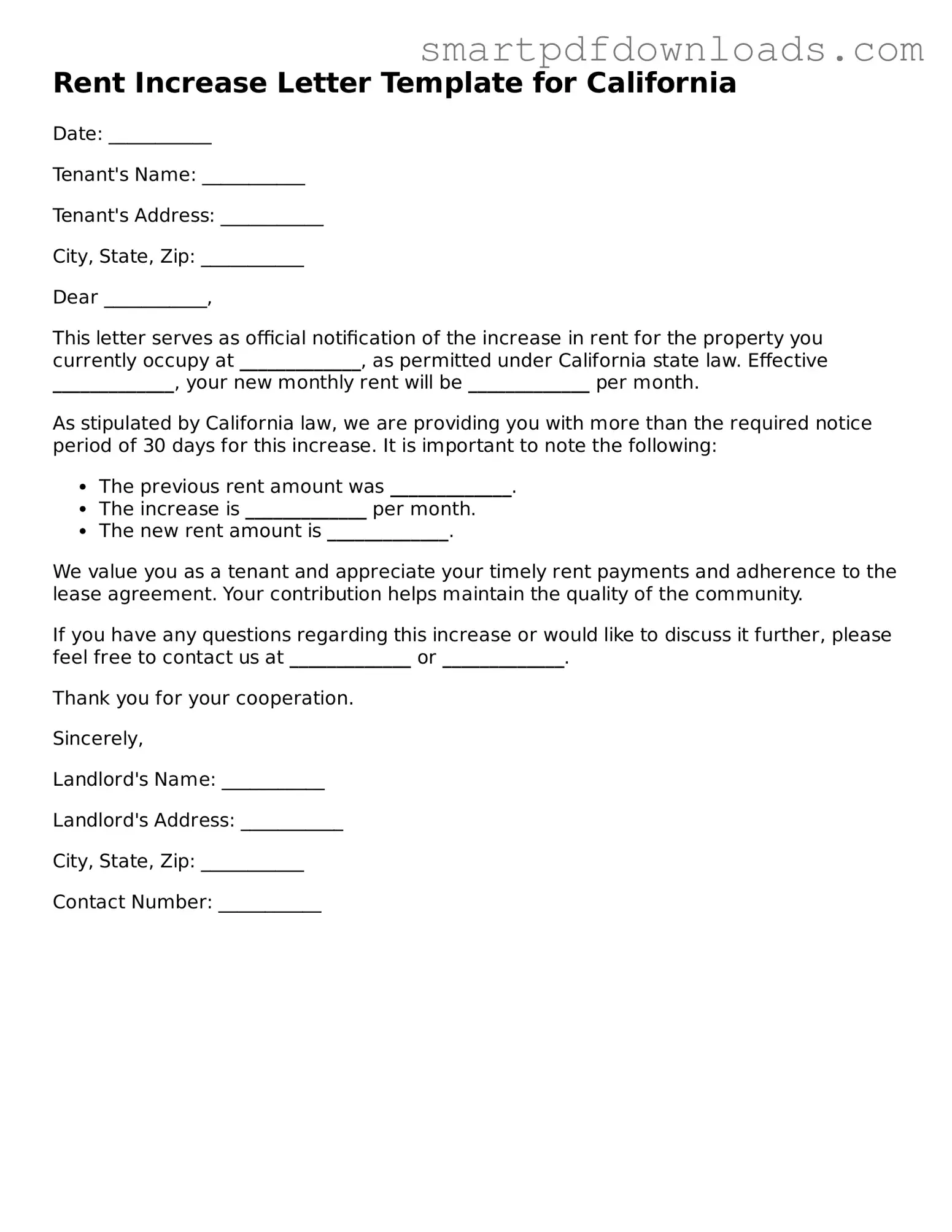Rent Increase Letter Template for California
Date: ___________
Tenant's Name: ___________
Tenant's Address: ___________
City, State, Zip: ___________
Dear ___________,
This letter serves as official notification of the increase in rent for the property you currently occupy at _____________, as permitted under California state law. Effective _____________, your new monthly rent will be _____________ per month.
As stipulated by California law, we are providing you with more than the required notice period of 30 days for this increase. It is important to note the following:
- The previous rent amount was _____________.
- The increase is _____________ per month.
- The new rent amount is _____________.
We value you as a tenant and appreciate your timely rent payments and adherence to the lease agreement. Your contribution helps maintain the quality of the community.
If you have any questions regarding this increase or would like to discuss it further, please feel free to contact us at _____________ or _____________.
Thank you for your cooperation.
Sincerely,
Landlord's Name: ___________
Landlord's Address: ___________
City, State, Zip: ___________
Contact Number: ___________
